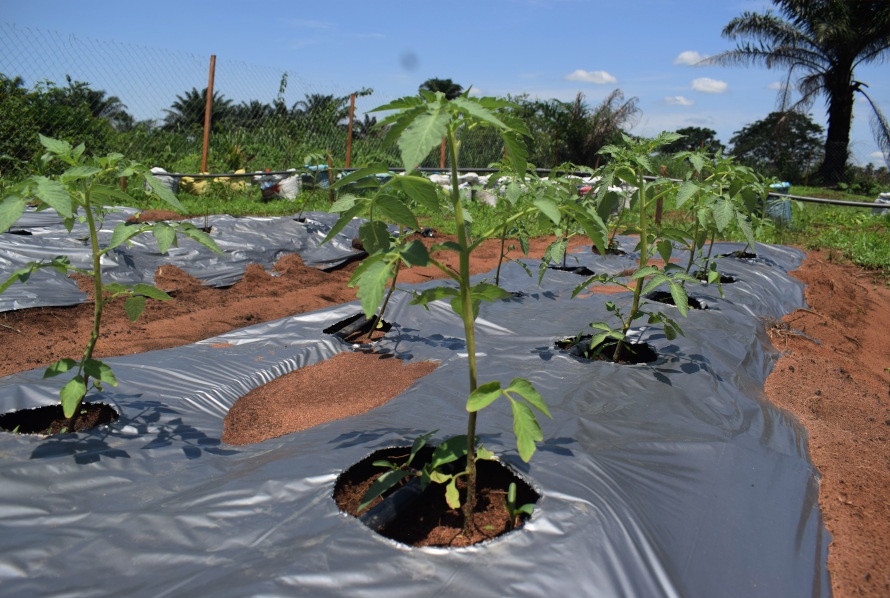
Building a food secured Africa

Building a food secured Africa
Almost everyone likes tomatoes like everyone loves paw-paw. But how do we grow this vegetable that is so used in almost every delicacy in every part of the world?

Almost everyone likes tomatoes like everyone loves paw-paw. But how do we grow this vegetable that is so used in almost every delicacy in every part of the world?. What steps do you take in cultivating tomato?
Firstly, tomatoes are vegetables. There are diverse varieties of tomatoes of which one good example is the Dera F1 Tomato.
Are you ready to learn about tomato cultivation? Let’s dive in!
Because tomato seeds are very fragile, they are grown in the nursery before transplanting to the farm land also referred to as beds. Nursing tomato seedlings can be performed in a nursery tray or in a nylon bag or a deep container. It takes about 4 weeks (i.e. 1 month) to get ready before transplanting. To ensure a great yield, use fertile loamy soil mixed with manure (how to tell a good soil) for both the nursery and the main farm. Also endeavor to water the nursery so the plants don’t die off for want of water.
In the course of raising the nursery, we go over to getting your farm land prepared for transplanting. The farm land for transplant should be ready for use by the time the 4 weeks nursery stage is over. Leaving seedlings in the nursery beyond the period for transplanting stunts their growth.
Locate a land where you want to make your bed for planting. Check the farm land to know if the land is sloppy or plain before making the bed. In case of a sloppy land, endeavor that the bed is made in such a way as not to obstruct the direction of water.
Clearing: Next, plough the land to locate and remove stumps, nylons and other debris that may obstruct plant growth. After that, expose the land to sunlight for at least two weeks.
Application of Manure to improve soil nutrients: There are two classifications of manure: Organic and Inorganic fertilizers. Organic involves use of animal dung while inorganic fertilizers are such as urea (this should be links directing to our website). One can decide to apply the manure to the soil before transplanting or apply the inorganic fertilizer after transplanting. You can also top dress on the long run; top dressing is the process of applying fertilizers to the soil surface of the standing crop to compensate for any deficiency at the beginning of the bed preparation and to boost plant development.
Bed Making: Beds should be made because the roots go deep as it is a tap root crop. Appropriate bed size is around 1m width, 20-30cm high and any length the land can take. Furrow spacing, which is the distance in between two beds, should be the same 1m.
Mulching: Mulching is the process of covering the bed with mulching film or saw dust or rice straw to help suppress the growth of weeds, conserve water and enhance moisture retention.
Drip Irrigation: Drip irrigation is done using drip tape. This comes in very handy during the dry season when there are no rainfalls.
Staking keeps tomato fruits that are developing off the ground and helps provide support for the plant to hold itself upright. Use poles or sticks that are about 6 feet tall (depending on how tall the variety you planted is).
Transplanting is the act of transferring the tomato plant to the bed. It is done 4 weeks (1 month) after setting up the nursery. When transplanting, it is advised that it is done in the evening so that the heat of the sun in the day does not stress the young plant which can lead to the plant dying off. This also helps the plant to adapt in a cool soil all through the night and get used to its new environment.
Harvesting tomatoes takes about 65 -70 days after transplanting or 95 – 100 days before transplanting till harvest. After harvesting you can proceed to consume or sell (depending on what your intentions were at the beginning). Harvesting is done using pruning tools like scissors to pick the fruits or you could twist the fruit until it comes off the branch. Avoid yanking or pulling on the fruits as this can damage the branches and affect further fruit production.
(Learn More about Common Disease and Pest Control in Tomato Farming)
Hope you found this article helpful? Do leave a comment and follow our social media handles for more articles like this.